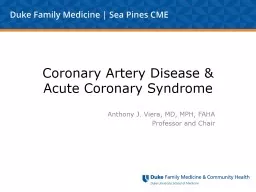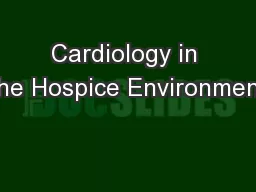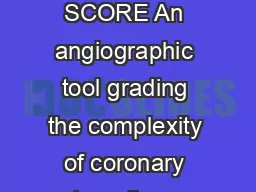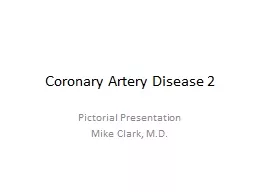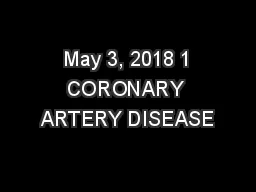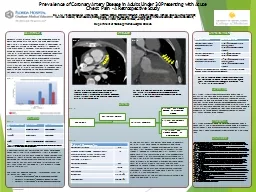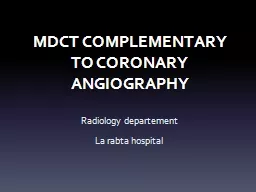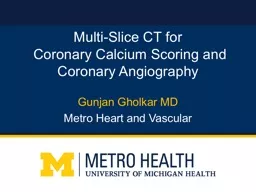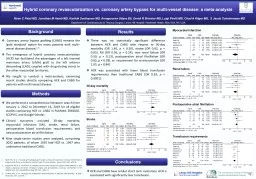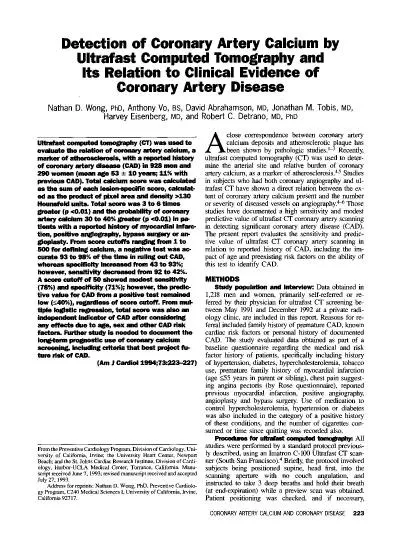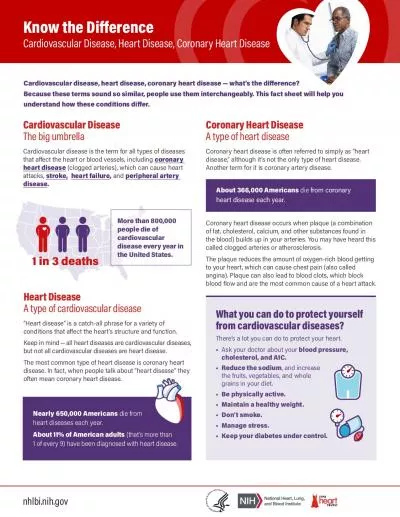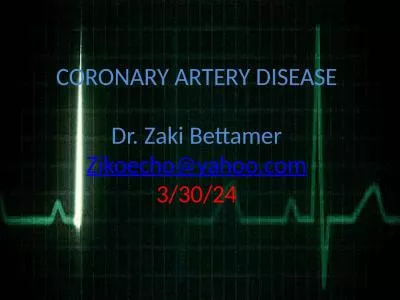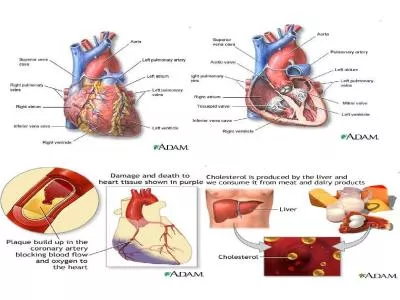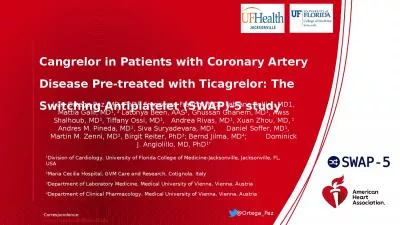PPT-Coronary Artery Disease &
Author : lindy-dunigan | Published Date : 2019-12-15
Coronary Artery Disease amp Acute Coronary Syndrome Anthony J Viera MD MPH FAHA Professor and Chair Objectives Describe the appropriate workup for chest pain based
Presentation Embed Code
Download Presentation
Download Presentation The PPT/PDF document "Coronary Artery Disease &" is the property of its rightful owner. Permission is granted to download and print the materials on this website for personal, non-commercial use only, and to display it on your personal computer provided you do not modify the materials and that you retain all copyright notices contained in the materials. By downloading content from our website, you accept the terms of this agreement.
Coronary Artery Disease &: Transcript
Download Rules Of Document
"Coronary Artery Disease &"The content belongs to its owner. You may download and print it for personal use, without modification, and keep all copyright notices. By downloading, you agree to these terms.
Related Documents

